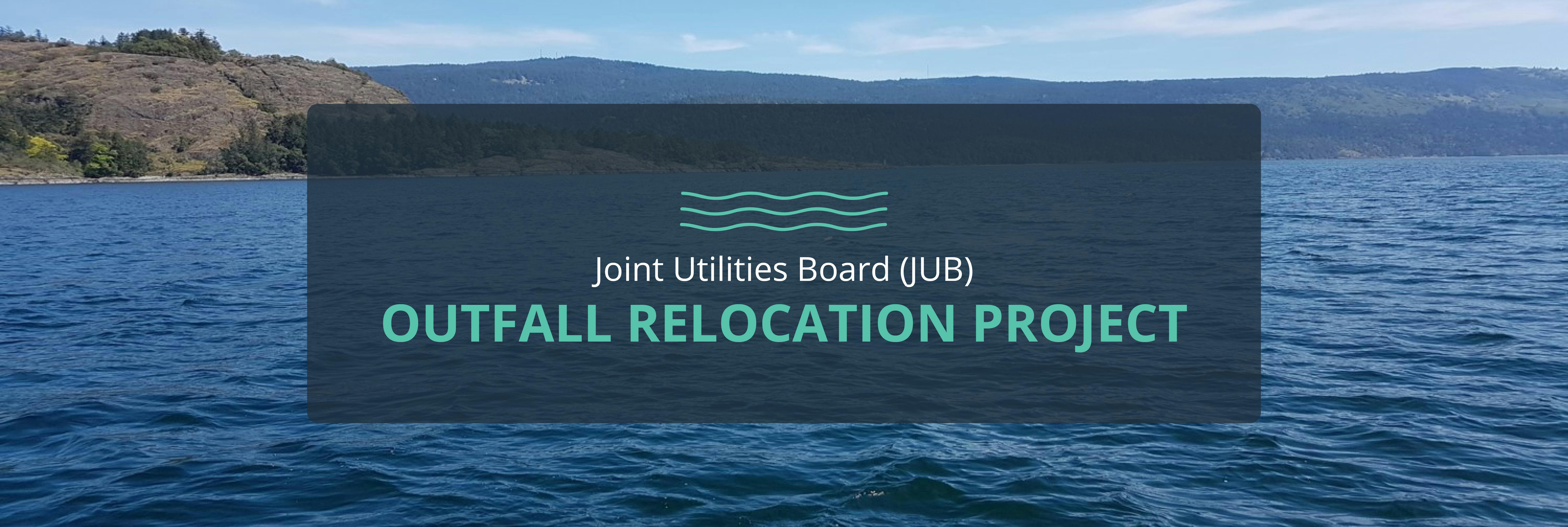Relocating the Cowichan River outfall

Work is underway to move the Joint Utilities Board treated sewage effluent outfall from the Cowichan River to a new location at the embayment line in Cowichan Bay.
Public engagement on this project will be starting in the near future. Sign up or follow this project to be notified of updates and next steps.
There are several reasons to relocate the outfall:
- The treatment plant is on land leased from Cowichan Tribes. The lease agreement includes a commitment to make a reasonable effort to move the outfall from the Cowichan River.
- During periods of very low river flow, there is not enough flow to provide the desired amount of effluent dilution. Low river flows, in particular during the summer and early fall, are expected to become more frequent due to climate change.
- The existing outfall infrastructure in the river is at risk of damage from log jams and gravel accumulation.
- Moving the outfall from the river may trigger a reassessment of the current shellfish harvesting moratorium in Cowichan Bay.
A new outfall location
Extensive studies, First Nations consultations and interest group/public engagement have identified the preferred location of the new outfall at the embayment line of Cowichan Bay. This outfall pipe will enter Cowichan Bay at Hecate Park.
 Map: Final marine routing to embayment line
Map: Final marine routing to embayment line
At this time, an anchorage (Anchorage B) near the embayment line is blocking the route to the preferred location.
North Cowichan is working with Transport Canada in the hope that this anchorage can be removed before work begins. A suitable location for an interim outfall location has been identified if it is necessary. A public notice regarding the new outfall location has been installed at Hecate Park as required by Transport Canada (on the online Navigable Waters Registry and under registry number 6565, or, under the NPP File Number 2021-504773). The public comment period is November 13, 2024 to December 13, 2024. Comments may be made in writing to NPPPAC-PPNPAC@tc.gc.ca
The outfall locations will provide significant dilution of the cleaned effluent in deeper water. Modelling shows that the discharge will meet federal and provincial standards, even with increased quantities of effluent as the population grows. The 400 metre buffer zone (shown in green) shows the limit of the shellfish harvesting exclusion zone and avoids known shellfish beds (shown in pink).
An Environmental Impact Study (Receiving Environment Monitoring Program) (PDF) is guiding the project monitoring. Pre-discharge monitoring and baseline studies have assessed the suitability of the discharge locations and established the background conditions in the receiving environment (Cowichan Bay) prior to installation of the new outfall. Ongoing monitoring after the outfall is operational will take place with the assistance of local First Nations.
Proposed pipeline routing (on land)
The cleaned effluent will no longer go into the Cowichan River, but will be transported by pipe from the treatment plant to the new Cowichan Bay outfall.
Through extensive consultation with First Nations, interest groups, and the public, a preferred pipeline route has been selected. This will see the pipe buried underground along road rights-of-way through reserve lands of Cowichan Tribes, along part of Cowichan Bay Road, and into the marine environment at Hecate Park. From here the pipe will rest on the seafloor and out to the new outfall.
Eelgrass protection
Steps to mitigate any impacts to important eelgrass beds in the Cowichan Bay estuary will be taken and where necessary, the eelgrass will be replaced and enhanced. The marine portion of the pipe will rest on the sea floor or in a trench for some sections.
Public and interest group engagement
Public conversations about relocating the outfall began in 2015 with public engagement led by the Cowichan Valley Regional District (CVRD). Interest group engagement began in 2018, led by North Cowichan.
In 2020 and 2021, additional public engagement on proposed land and marine pipe routing took place through online discussions and a webinar.
- Project updates and engagement reports can be found in the Documents section of this page.
First Nations consultation
First Nations consultations have been taking place over the duration of this project. This consultation involves in depth conversations with Cowichan Tribes, Pauquachin First Nation, W̱SÁNEĆ Leadership Council (Tsartlip, Tseycum, and initially Tsawout First Nations), Malahat Nation, and Tsawout First Nation.
About the sewage treatment plant and outfall
The Joint Utilities Board Sewage Treatment Plant is a hybrid secondary/tertiary treatment plant that treats wastewater. The plant and outfall serve approximately 14,000 households and businesses in parts of North Cowichan, Duncan, Cowichan Bay, Eagle Heights and Cowichan Tribes (the CVRD Central Sector Area).
The plant is located on Cowichan Tribes’ land near Duncan and is operated by North Cowichan. The plant discharges highly treated effluent (cleaned water) into the Cowichan River, approximately 5 kilometres upstream from the head of Cowichan Bay. While this effluent meets provincial swimming safety standards, it is not clean enough for drinking.
About the Joint Utilities Board (JUB)
The Duncan-North Cowichan Joint Utilities Board is governed by Duncan-North Cowichan Joint Utilities Agreement Bylaw 1977 and is comprised of two members from City of Duncan Council and two members from the Municipality of North Cowichan Council. The Board governs the joint financing, construction, operation and maintenance of certain municipal utilities and sewerage facilities for the benefit of both municipalities, including the sewage lagoons and outfall.
Have a question about the outfall relocation project?
Some frequently asked questions and their answers are in the FAQ box on this page. If you have a question, ask it here. A reply will be posted as soon as possible.





